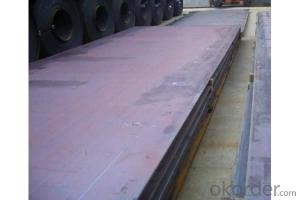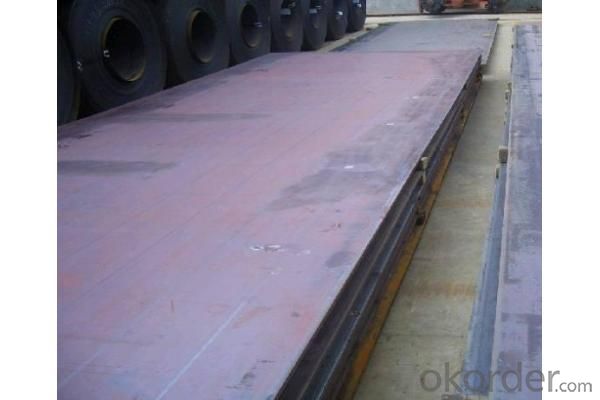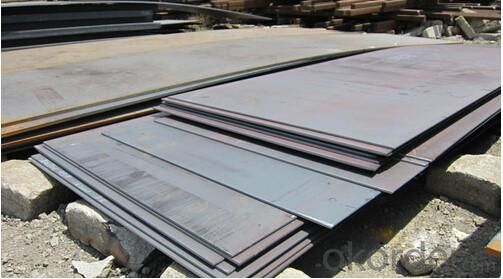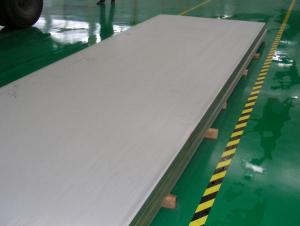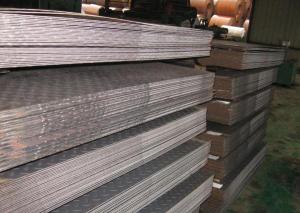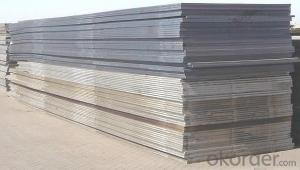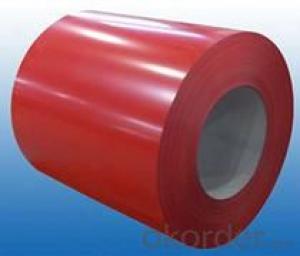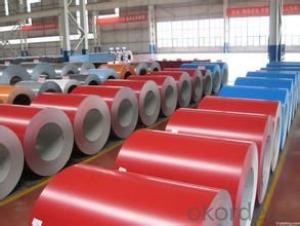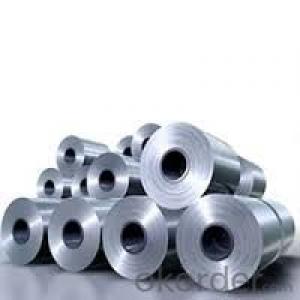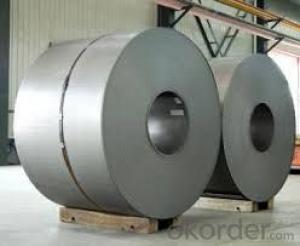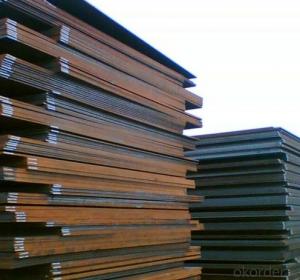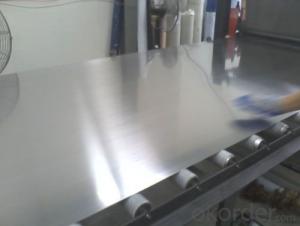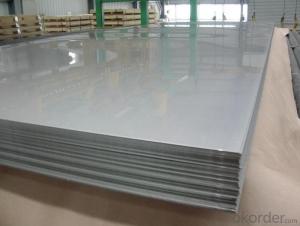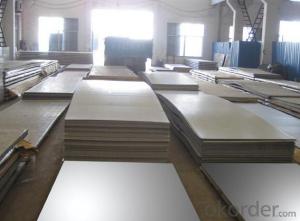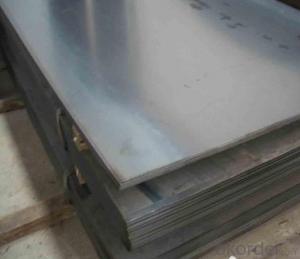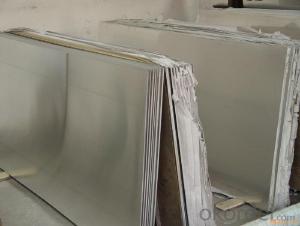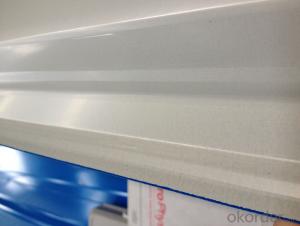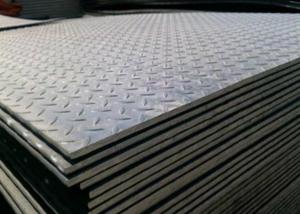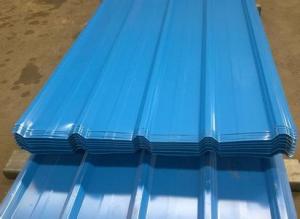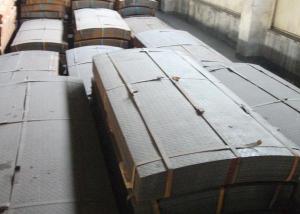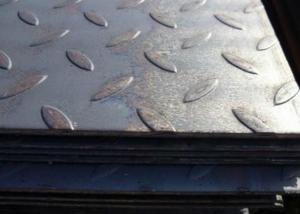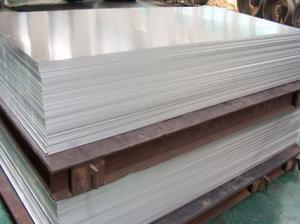Wear-resistance steel plates AR500 with high quality
- Loading Port:
- Tianjin
- Payment Terms:
- TT OR LC
- Min Order Qty:
- 100 m.t.
- Supply Capability:
- 5000 m.t./month
OKorder Service Pledge
OKorder Financial Service
You Might Also Like
1. Specifications
.AR500 Steel plate
.High quality products
.Compective price
.Fast delivery
2.Details:
| European standard plate, Japanese standard plate, American standard plate |
Standard | EN 10025-2:2004, JIS G3101-2004, ASTM A36/A36M, ASTM A283/A283M, ASTM A572/A572M |
Material | S235JR,S235J0,S235J2,S275JR,S275J0,S275J2,S355JR,S355J0,S355J2 |
S355K2,E295,E335,St37-2,St52-3, SS400,SS400-B,SS490A,SS490B,SS490C | |
A36,A283 Gr.A, A283 Gr.B, A283 Gr.C, A283 Gr.D,A572 Gr.42, A572 Gr.50, A572 Gr.55, A572 Gr.60, A572 Gr.65 | |
Shape | Plate |
Thickness | 8-80mm |
Width | 1250-2700mm |
Length | 1-12M, or as required |
Surface | Black,Painted,Galvanized |
Description | Carbon structural steel plate, Low-alloy structural steel plate, Quality carbon structural steel plate |
Standard | GB/T700-2006, GB/T1591-1994,GB/T3274-2007, GB/T699-1999 |
Material | Q195,Q215,Q235A,Q235B,Q235C,Q255,Q275,Q295,Q345A,Q345B,Q2345C, 30-50# |
Shape | Plate |
Thickness | 8-80mm |
Width | 1250-2700mm |
Length | 1-12M, or as required |
Surface | Black,Painted,Galvanized |
Description | Boiler steel plate |
Standard | GB 713-1997 |
Material | 20g,22Mng,16Mng,19Mng,Q245R,Q345R |
Shape | Plate |
Thickness | 8-80mm |
Width | 1250-2700mm |
Length | 1-12M, or as required |
Surface | Black,Painted,Galvanized |
Description | Ship steel plate |
Standard | GB 712-2000,CCS,Q/SGZGS 262.2-2007,BV,LR,NK,KR,ABS,GL,RINA,DNV |
Material | A,B,D,A32,D32,D32,A36,D36 |
Shape | Plate |
Thickness | 8-80mm |
Width | 1250-2700mm |
Length | 1-12M, or as required |
Surface | Black,Painted,Galvanized |
3. Pictures
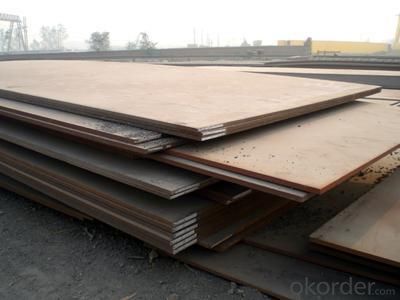
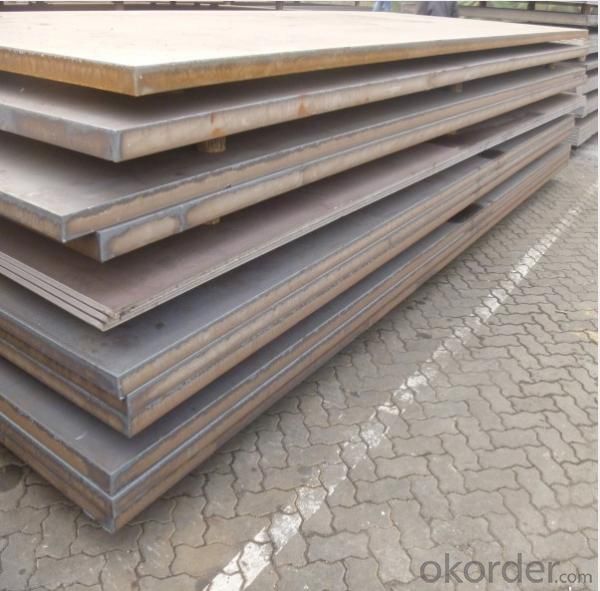
4.FAQ
We have organized several common questions for our clients,may help you sincerely:
①How about your company?
A world class manufacturer & supplier of castings forging in carbon steel and alloy steel,is one of the large-scale professional investment casting production bases in China,consisting of both casting foundry forging and machining factory. Annually more than 8000 tons Precision casting and forging parts are exported to markets in Europe,America and Japan. OEM casting and forging service available according to customer’s requirement.
②How to guarantee the quality of the products?
We have established the international advanced quality management system,every link from raw material to final product we have strict quality test;We resolutely put an end to unqualified products flowing into the market. At the same time, we will provide necessary follow-up service assurance.
③How long can we receive the product after purchase?
In the purchase of product within three working days, We will arrange the factory delivery as soon as possible. The pecific time of receiving is related to the state and position of customers.Commonly 7 to 10 working days can be served.
- Q: Are steel sheets suitable for decorative applications?
- Indeed, decorative applications can benefit from the suitability of steel sheets. The versatility, durability, and aesthetic appeal of steel sheets allow for their use in a wide range of decorative purposes. They can be easily shaped, sized, and patterned to fit different needs. Steel sheets offer various possibilities for creating decorative elements such as wall panels, room dividers, ceiling tiles, and facades. They can also be utilized for decorative accents like trims, moldings, and decorative screens. The sleek and reflective surface of steel sheets adds a touch of modernity and elegance to any space. Furthermore, steel sheets can be enhanced with different finishes and coatings to further enhance their decorative properties. These options include paints, powder coatings, patinas, and even specialized coatings like faux rust or metallic finishes. With these choices, steel sheets can complement any interior or exterior decor style, opening up a wide range of design possibilities. Additionally, steel sheets are highly durable and long-lasting, making them suitable for both indoor and outdoor decorative applications. They are resistant to corrosion, fire, and extreme weather conditions, ensuring that the decorative elements made from steel sheets maintain their appearance and functionality over time. To sum up, steel sheets are an excellent choice for decorative applications. Their versatility, durability, and aesthetic appeal make them a perfect option for creating visually appealing and long-lasting decorative elements in various settings.
- Q: What are the different sizes of steel sheets available?
- Various sizes of steel sheets are readily available to cater to a range of applications and industries. The dimensions of steel sheets can vary depending on factors such as thickness, width, and length. In terms of thickness, steel sheets are commonly found in gauges ranging from 7 to 30. The gauge number indicates the thickness, with higher numbers representing thinner sheets. Thinner sheets, like those with a gauge of 30, are often used for flexible applications. On the other hand, thicker sheets, like those with a gauge of 7, are typically employed for heavy-duty applications that require strength and durability. When it comes to width, steel sheets are offered in a variety of choices. The most frequently seen widths include 36 inches, 48 inches, and 60 inches. Customized widths can also be obtained to meet specific requirements. Regarding length, standard lengths for steel sheets are typically 96 inches and 120 inches. These lengths are widely used in various industries. However, similar to width, length can also be customized to suit specific needs. It is important to note that the availability of different sizes of steel sheets may vary depending on the supplier and the specific grade of steel used. It is advisable to consult with a steel sheet supplier or manufacturer to determine the exact sizes available for a particular application.
- Q: What is the difference between a perforated and non-perforated steel sheet?
- The designs and functionalities of perforated and non-perforated steel sheets distinguish them from each other. Perforated steel sheets are characterized by evenly distributed small holes or perforations on their surfaces, which can vary in shape and size depending on specific application requirements. The main purpose of a perforated steel sheet is to enable the flow of air, light, sound, and liquids through the sheet while maintaining its structural integrity. This makes it highly suitable for applications where ventilation, filtration, or visibility is crucial. Industries such as architecture, automotive, manufacturing, and construction commonly utilize perforated steel sheets for purposes like acoustic panels, protective barriers, decorative elements, and filter screens. On the contrary, non-perforated steel sheets lack any holes or perforations on their surfaces. They are solid sheets of steel primarily used for applications where strength, durability, and resistance to impact or abrasion are significant factors. Structural engineering, machinery, shipbuilding, and heavy-duty equipment manufacturing often rely on non-perforated steel sheets as they provide a sturdy and dependable surface for load-bearing and other demanding applications. To summarize, the distinction between perforated and non-perforated steel sheets lies in their design and functionality. Perforated steel sheets possess small holes throughout their surfaces, allowing the passage of air, light, sound, and liquids. Non-perforated steel sheets, on the other hand, are solid sheets without any holes, providing strength and durability for heavy-duty applications.
- Q: What is the difference between a brushed and polished steel sheet?
- A brushed steel sheet and a polished steel sheet differ in terms of their surface finishes. A brushed steel sheet is characterized by a pattern of parallel lines or scratches on its surface, created using abrasive materials or tools. The purpose of brushing is to give the steel sheet a textured appearance, which helps to hide fingerprints, scratches, and wear over time. It also provides a more industrial, matte finish. On the other hand, a polished steel sheet has a smooth and glossy surface. Polishing involves using polishing compounds or abrasive materials to remove imperfections, scratches, and oxidation from the steel surface. This process creates a reflective and mirror-like finish, enhancing the aesthetic appeal of the steel sheet. Polished steel sheets are commonly used in applications where appearance and visual appeal are important, such as architectural design, interior decoration, and high-end products. In summary, the main difference between a brushed and polished steel sheet lies in their surface finishes. Brushed steel sheets have a textured, matte appearance, while polished steel sheets have a smooth and glossy, mirror-like finish. The choice between the two depends on the desired aesthetic, functional requirements, and the intended application of the steel sheet.
- Q: What are the different surface protection methods for steel sheets?
- Some common surface protection methods for steel sheets include galvanization, powder coating, painting, and plating. Galvanization involves coating the steel with a layer of zinc to protect it from corrosion. Powder coating involves applying a dry powder to the steel and then curing it under heat to form a protective layer. Painting involves applying a layer of paint to the steel to provide both protection and aesthetic appeal. Plating involves electroplating the steel with a layer of another metal, such as chrome or nickel, to enhance its corrosion resistance and appearance.
- Q: Can steel sheets be used for kitchen or food preparation areas?
- Yes, steel sheets can be used for kitchen or food preparation areas. Steel is a durable and hygienic material that is resistant to corrosion, heat, and staining. It is commonly used in commercial kitchens and food processing facilities due to its easy cleaning properties and ability to withstand heavy use.
- Q: What factors affect the cost of steel sheets?
- Several factors affect the cost of steel sheets, including the current market demand and supply, raw material prices, manufacturing and processing costs, transportation and logistics expenses, as well as any applicable trade tariffs or taxes. Additionally, factors such as the type and quality of steel, size and thickness of the sheets, as well as any special finishes or coatings required, can also impact the overall cost.
- Q: Are steel sheets resistant to termites and insects?
- No, steel sheets are not resistant to termites and insects.
- Q: Can steel sheets be used for outdoor applications?
- Yes, steel sheets can be used for outdoor applications. Steel is a durable and weather-resistant material, making it suitable for various outdoor uses such as roofing, siding, fencing, and construction projects. It is capable of withstanding harsh weather conditions, including rain, wind, and sunlight, without significant deterioration. Additionally, steel sheets can be treated or coated to further enhance their resistance to corrosion, making them an ideal choice for outdoor applications.
- Q: Can steel sheets be used for architectural purposes?
- Yes, steel sheets can be used for architectural purposes. They are often utilized in construction projects for their durability, strength, and versatility. Steel sheets can be used for roofing, cladding, facades, and structural applications, providing a modern and sleek aesthetic while also offering structural integrity and resistance to weather conditions.
Send your message to us
Wear-resistance steel plates AR500 with high quality
- Loading Port:
- Tianjin
- Payment Terms:
- TT OR LC
- Min Order Qty:
- 100 m.t.
- Supply Capability:
- 5000 m.t./month
OKorder Service Pledge
OKorder Financial Service
Similar products
Hot products
Hot Searches
Related keywords
